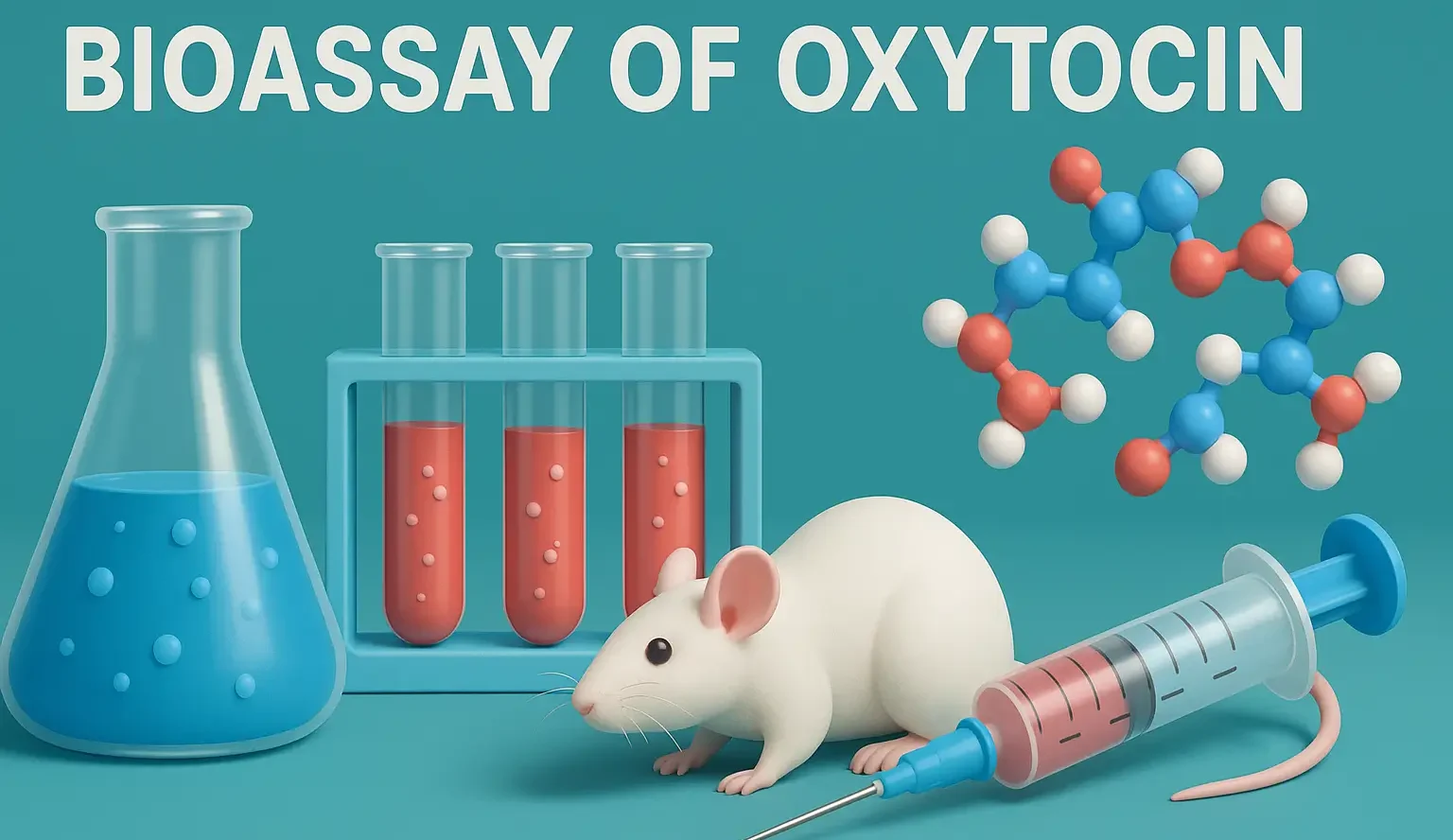- Bioassay of Oxytocin: Commonly done using uterine contraction response in rats or guinea pigs.
- Bioassays of Oxytocin’s: Measures potency by comparing test sample to standard oxytocin.
Principle of Bioassay of Oxytocin
- Oxytocin stimulates rhythmic contraction of uterine smooth muscle and also causes milk ejection.
- The bioassay relies on measuring the uterine contraction magnitude or frequency induced by oxytocin.
Methods
1. Rat Uterus Assay (In Vitro)
- Procedure:
- Use an estrogen-primed rat (to ensure the uterus is sensitive to oxytocin).
- Isolate the uterine horns/strips and mount in an organ bath with physiological solution.
- Add standard oxytocin in graded doses, record contractions, wash out, then repeat with the test sample.
- Potency Determination: Plot dose-contraction curves for standard and test; the potency is determined by comparing ED50 values (the dose that produces 50
2. In Vivo Method (e.g., Anesthetized Cat or Rat)
- Procedure:
- Oxytocin is administered intravenously.
- Measure and compare uterine contractions against those produced by the standard.
- Potency Determination: Compare the doses needed to produce a defined contraction response (e.g., 50
Click Here to Watch the Best Pharma Videos

